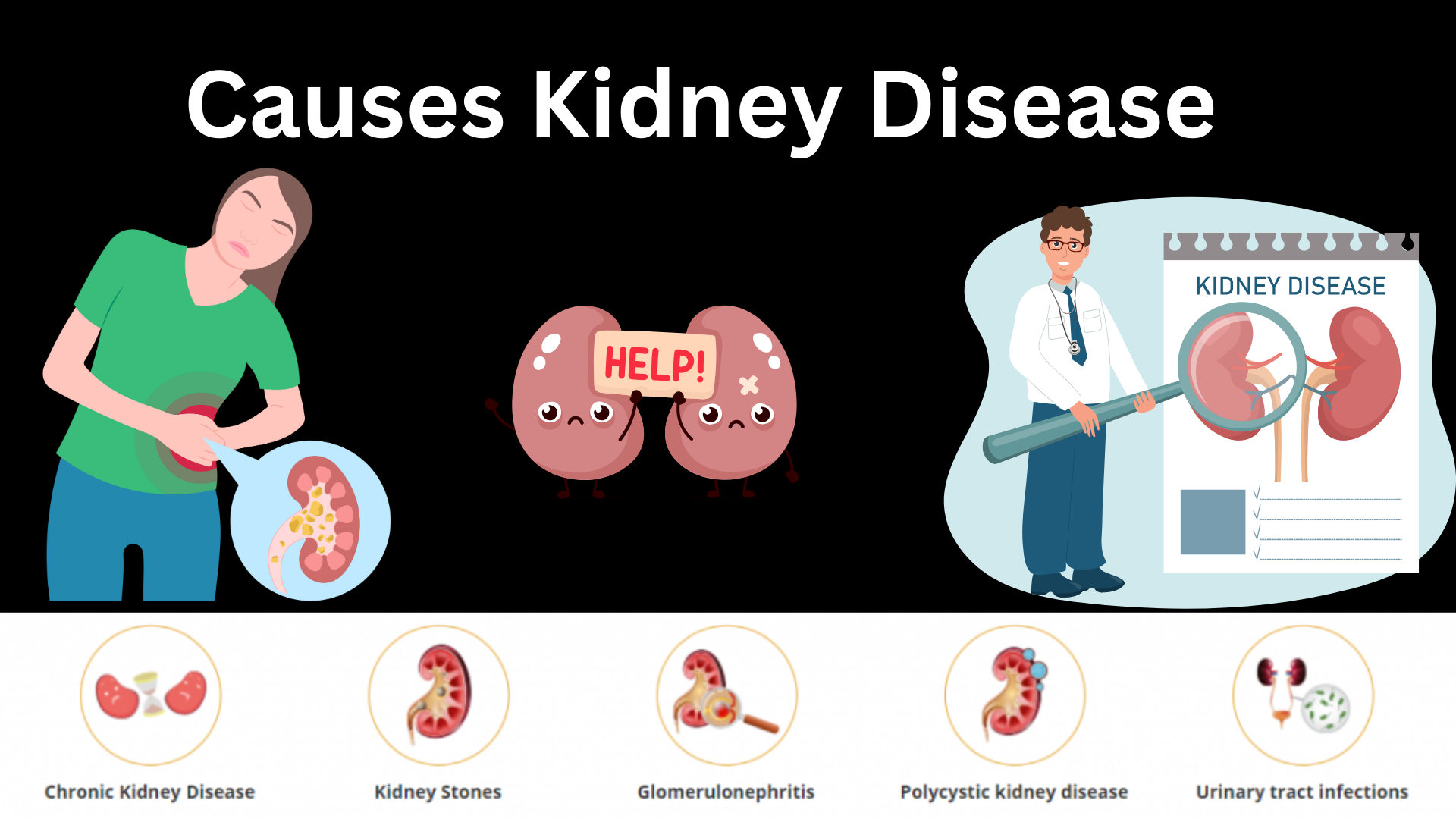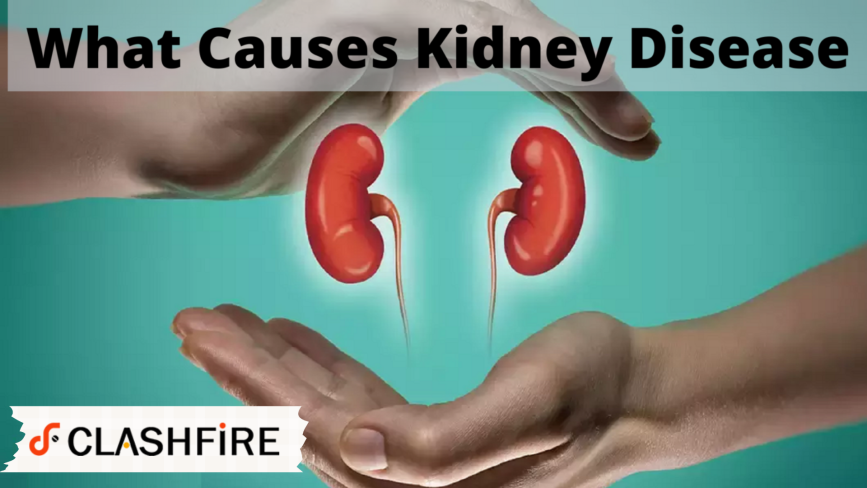Table of Contents
Kidney disease can strike an individual for several reasons, but the most common is diabetes of both type 1 and type 2. Other factors contributing to kidney damage that may result in kidney failure include heart disease and obesity. Inflammation and urinary tract issues in different kidney parts can also cause long-term functional decline. This blog will help you know kidney disease better, explaining stages, types, symptoms, food items to avoid, and prevention.
Kidney disease symptoms
Kidney disease can go unnoticed for several months until the symptoms become severe.
Following are early warning signs that you may experience due to developing kidney disease:
- difficulty concentrating
- fatigue
- poor appetite
- trouble sleeping
- swollen feet or ankles
- muscle cramping
- dry, scaly skin
- puffiness around the eyes region after waking up in the morning
- frequent urination, incredibly late at night
Severe symptoms that might indicate your kidney disease is leading to kidney failure include:
- nausea, vomiting, and loss of appetite
- fluid retention
- changes in urine output
- decreased sex drive
- anemia (reduction in red blood cells)
- pericardium (a fluid-filled sac that covers the heart) inflammation
- sudden rise in the potassium levels (called hyperkalemia)
Types of kidney disease

Chronic kidney disease
Chronic kidney disease (CKD) is the most common form of kidney disease. It is a long-term medical condition that does not improve over time and is commonly caused due to high blood pressure. In this medical condition, the kidney function deteriorates to the point where this body part can no longer function its job correctly.
Kidney stones
Kidney stones occur when substances such as minerals in the blood crystallize in the kidneys, resulting in the formation of solid masses (rocks). These solid masses usually leave the body during urination. Passing these stones can be extremely challenging and painful, but they hardly cause significant problems.
Polycystic kidney disease
PKD is a genetic disorder that leads to numerous cysts (tiny sacs of fluid) in the kidneys. These cysts are likely to interfere with regular kidney function and cause kidney failure.
Kidney Disease Stages
Stage 1 kidney disease
In stage 1, there is very mild damage as this stage is quite adaptable, and people can adjust. It allows them to perform at 90 percent or better. At this stage, chronic kidney disease is likely to be diagnosed by chance during routine blood and urine tests. If you have high blood pressure or diabetes, you may have these tests, the top causes of this type of kidney disease in the United States. There are almost no symptoms as the kidney functions at 90 percent or better.
Stage 2 kidney disease
At this stage, the kidneys function between 60 to 89 percent. In stage 2, you might still have no symptoms or nonspecific signs, such as itching, fatigue, sleep problems, loss of appetite, and weakness.
Stage 3 kidney disease
At stage 3A, the kidney functions between 45 to 59 percent. While at stage 3B, the condition worsens and the kidney starts functioning between 30 and 44 percent. In stage 3, the kidney stops filtering toxins, waste, and fluids well, and they begin to build up in the body.
You may have some symptoms at this stage, such as:
- fatigue
- back pain
- persistent itching
- loss of appetite
- weakness
- sleep problems
- urinating less or more than usual
- swelling of the hand and feet
Stage 4 kidney disease
At stage 4, you may experience moderate to severe kidney damage as the kidney starts functioning between 15 to 29 percent. Your body may start building up more waste, fluids, and toxins. It would help if you did all your level best to prevent progression in kidney failure. According to the CDC reports, 48 percent of individuals with severely reduced kidney disease are unaware they have it.
The symptoms may include:
- chest pain
- back pain
- fatigue
- decreased mental sharpness
- loss of appetite
- nausea and vomiting
- muscle twitches or cramps
- shortness of breath
- persistent itching
- weakness
- sleep problems
- urinating more or less than usual
- swelling of the hands and feet
Stage 5 kidney disease
At stage 5, your kidney may start working at less than 15 percent capacity, or you suffer kidney failure. When that happens, the waste and toxins buildup becomes more life-threatening. It is end-stage renal disease.
Kidney failure symptoms can include:
- breathing problems
- back and chest pain
- fatigue
- decreased mental sharpness
- muscle twitches or cramps
- little to no appetite
- persistent itching
- nausea or vomiting
- trouble sleeping
- severe weakness
- urinating more or less than usual
- swelling of the hands and feet
Foods to avoid kidney disease
Dietary recommendations and restrictions vary depending upon the stages of kidney disease. For instance, individuals with early stages of kidney disease are likely to have different nutritional regulations than people with end-stage renal disease or kidney failure.
People on dialysis may require a different dietary restriction. Most people with late or final stage kidney disease will need to follow a diet that avoids a buildup of specific chemicals or nutrients in the blood.
Some food you should avoid if you have kidney disease may include:
- Dark-colored soda: Due to the calories and sugar sodas contain, they harbor additives providing phosphorus, which are not safe for people with kidney disease. Several foods and beverages add phosphorus while processing to enhance flavor, prevent discoloration, and prolong shelf life. So, one should avoid sodas, especially the dark ones, on a renal diet.
- Avocados: Avocados are known for their nutritious qualities, including fiber, heart-healthy fats, and antioxidants. While they are usually a healthy addition, those with kidney problems may need to avoid them. Since avocados are a rich source of potassium, one average-sized avocado offers a whopping 690 mg of potassium.
- Canned food, such as vegetables, soups, and beans, often comes with packaging due to its low cost and convenience. Most canned food items contain high sodium, as manufacturers add salt as a preservative to increase shelf life. Due to the high sodium levels found in canned foods, it is recommended that individuals with kidney disease avoid their consumption.
- Whole wheat bread: People with kidney disease may find it confusing to choose the proper bread. Whole wheat bread is more nutritious, primarily because of its high fiber content. However, white bread is more considered over exclusive wheat varieties for people with kidney disease. Due to its phosphorus and potassium available in whole grains or more bran bread.
- Brown rice: Like whole wheat bread, brown rice is also a whole grain with higher potassium and phosphorus than its white rice counterpart. You may fit brown rice into a renal diet, but only in a controlled and balanced portion with other food items to avoid an excessive daily intake of phosphorus and potassium. Buckwheat, bulgur, couscous, and pearled barley are nutritious, lower phosphorus components that can offer a good substitute for brown rice.
- Bananas: are known for high potassium. While they have naturally low sodium levels, one medium-size banana offers 422 mg of potassium. If your medical healthcare professional has asked you to limit potassium intake, it may be challenging to take it as a daily staple.
- Dairy: Dairy products are vitamins and nutrients rich as they are also a natural source of potassium and phosphorus and a good protein source. In conjunction with phosphorus-rich foods, consuming excessive dairy can affect bone health in people with kidney disease.
- Oranges and orange juice: While orange and orange products are well known for their vitamin C source, they are also rich in potassium. Due to the potassium content, oranges and orange juice need to be avoided or limited on a renal diet. Apples, grapes, and cranberries are suitable substitutes for orange products, as they contain lower potassium contents.
- Processed meats: have been long associated with chronic kidney disease and are generally not considered healthy due to their preservative contents. Processed meats are salted, cured, dried, or canned. It typically contains large salt amounts, primarily to preserve the flavor and improve the taste.
- Olives, pickles, and relish: Processed olives, pickles, and relish are all examples of pickled or cured foods. Usually, expansive salt contents are added during the pickling or curing process. These components tend to be salty, as they are fixed and fermented to taste less bitter.
- Apricots are rich sources of vitamin A, vitamin C, and fiber. They also contain high potassium, as one cup of fresh apricots offers 427 mg of potassium. This content is even more in dried apricots. It is best to avoid apricots, primarily dried, on a renal diet.
- Potatoes and sweet potatoes: are potassium-rich vegetables. Although, you can soak or leach high potassium foods such as potatoes and sweet potatoes to reduce the potassium contents. Cutting potatoes in thin, trim pieces, and boiling them for at least ten minutes can reduce the potassium content by approximately 50 percent.
- Tomatoes are another source of high potassium fruit that does not fit the renal diet guidelines. Tomatoes are often served stewed or raw and are often used to make sauces. Only one cup of tomato sauce can have upwards of 900 mg of potassium. Using roasted red pepper instead of tomato sauce can be a delicious substitute and offer less potassium per serving.
- Packaged and premade meals: Processed food items are a significant sodium component in the diet. Among these foods, instant, packaged, and premade meals are primarily the most heavily processed food containing sodium. Examples may include microwaveable meals, frozen pizza, and instant noodles.
What to do to stay away from kidney disease?
One cannot control risk factors such as age, race, or family history.
But you can follow some measures to stay away from kidney disease:
- drink plenty of water
- control blood pressure
- maintain blood sugar level if you have diabetes
- quit smoking
- reduce salt intake
You should follow the dosage consideration for over-the-counter (OTC) medications. Taking a high amount of aspirin (Bayer) or ibuprofen (Motrin, Advil) can cause kidney damage. So, rather than taking it in excessive amounts, consult your medical healthcare professional if the regular doses of these drugs do not help you deal with the pain effectively.
